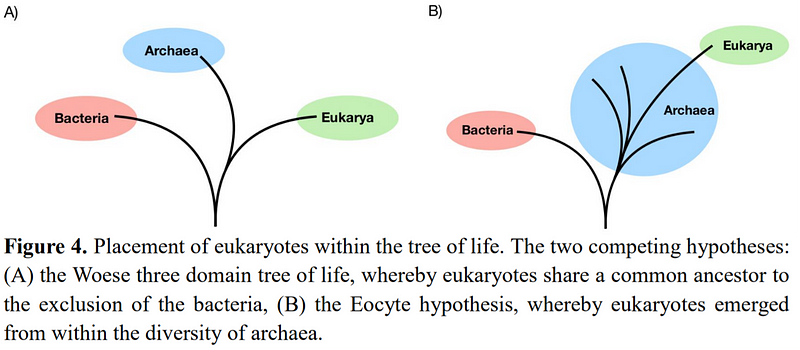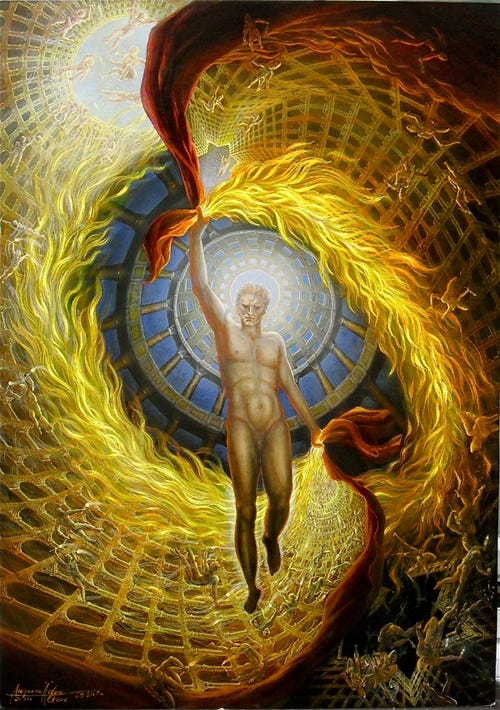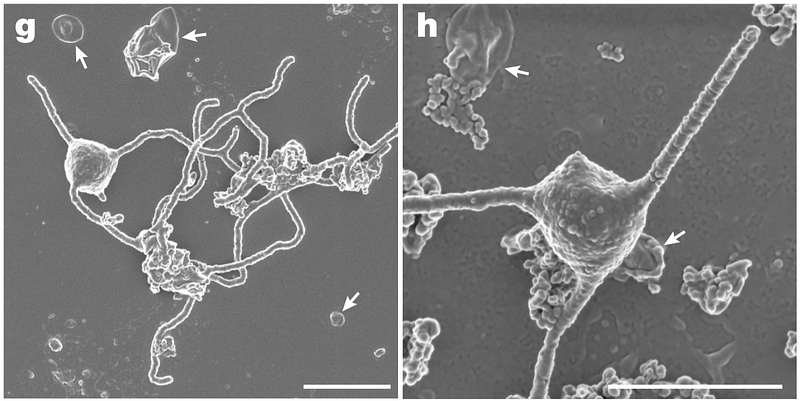A Trickster Microbe: Rethinking the Tree of Life
Written on
Chapter 1: Understanding Life's Evolutionary Framework
The classification of life is typically represented by a three-domain tree: Bacteria, Archaea, and Eukarya. While most eukaryotes are multicellular organisms made up of multiple cells, bacteria and archaea are unicellular, consisting of a single cell.
Archaea differs from bacteria, particularly in its cell wall composition and enzymes, which exhibit more similarities to those found in eukaryotes. Notably, archaea are resistant to antibiotics and often thrive in extreme environments, such as those exceeding 100°C.
According to this established model, all three domains of life share a theoretical last universal common ancestor (LUCA) believed to have existed approximately 4 billion years ago, from which both archaea and eukaryotes are thought to have emerged.

However, advocates of a two-domain tree of life argue that eukaryotes evolved from a subgroup of archaea, suggesting that this archaeon is indeed an ancestor of eukaryotes. This debate has fluctuated between heated discussions and periods of calm.
A significant scientific breakthrough in 2019 has reignited this discussion. Researchers are now reassessing the validity of the two-domain tree of life.
Section 1.1: The Discovery of a New Archaeon
In a remarkable achievement recognized as a runner-up in the 2019 scientific breakthroughs, microbiologists from the Japan Agency for Marine-Earth Science and Technology successfully isolated an archaeon from the Pacific Ocean floor and cultivated it in a laboratory bioreactor. Recreating the ocean floor's environment took an impressive 12 years of meticulous fine-tuning.
Professor Thijs Ettema, an evolutionary microbiologist at Wageningen University who was not involved in the research, remarked, "This is a monumental paper that reflects a tremendous amount of work and perseverance. It’s a major step forward in understanding this important lineage."
The newly identified archaeon has been designated as Candidatus Prometheoarchaeum syntrophicum, belonging to the Asgard superphylum.

The name Prometheoarchaeum pays homage to Prometheus, a figure from Greek mythology known for his cunning and for bringing fire to humanity. This new archaeon challenges existing notions of the evolutionary tree of life, suggesting a shift from the three-domain model to a two-domain perspective.
The researchers explained, “The genus name draws an analogy to Prometheus’s role in the origin of humans from sediments and the acquisition of an unprecedented oxygen-driven energy-harnessing ability,” as reported in Nature, 2020.
Video Description: This video explores how the discovery of Prometheoarchaeum has shifted our understanding of evolutionary biology.
Section 1.2: The Behavior of Prometheoarchaeum
Under microscopic observation, Prometheoarchaeum exhibits a spherical shape. It requires methane for its growth, alongside other microbes such as Methanogenium and Halodesulfovibrio, which consume hydrogen. Interestingly, Prometheoarchaeum releases hydrogen as a byproduct, which can inhibit its growth.
When conditions are favorable, this archaeon grows slowly, taking around 20 days to double its population, a stark contrast to bacteria that can multiply in less than an hour. Professor Ettema noted, “It’s one of the slowest-dividing organisms I know of.”
After months of observation, researchers witnessed a fascinating behavior: the spherical Prometheoarchaeum extends long tentacle-like structures to engulf surrounding proteins for nourishment.
This predator-like behavior suggests that Prometheoarchaeum may have been responsible for consuming the first mitochondria. The researchers propose that the archaeon interacted with a facultatively aerobic organotrophic partner that could manage toxic oxygen, which could lead to the development of mitochondria.
They termed this interaction the "Entangle–engulf–endogenize" (E³) model.

Genomic analyses support the theory that Prometheoarchaeum and other archaea are more closely related to eukaryotes than to bacteria. The researchers confirmed the presence of 80 eukaryotic signature proteins also found in related Asgard archaea.
Chapter 2: Current Perspectives and Controversies
While some scientists, like Professor James McInerney from the University of Nottingham, express skepticism regarding whether Prometheoarchaeum accurately represents events from 2 billion years ago, the Japanese researchers acknowledge the significant time gap between this modern organism and the last eukaryotic common ancestor (LECA).
They caution that, although they can formulate educated hypotheses about evolutionary events, many uncertainties remain.
Critics like microbiologist Rohit Ghai from the Czech Academy of Sciences find the findings intriguing yet inconclusive, questioning whether the observations definitively demonstrate that Prometheoarchaeum can indeed ingest a mitochondrion.
The Japanese team emphasizes that their research proposes a hypothetical model for eukaryogenesis rather than providing concrete proof. They conclude, “Based on the data from cultivation and genomics, alongside reasoned interpretations of existing literature, we propose a hypothetical model for eukaryogenesis, termed the entangle–engulf–endogenize (E³) model.”
Video Description: This video discusses the implications of the E³ model for understanding the origins of eukaryotic life.
This article draws inspiration from the work of JJ Lim, BSc (Hons).